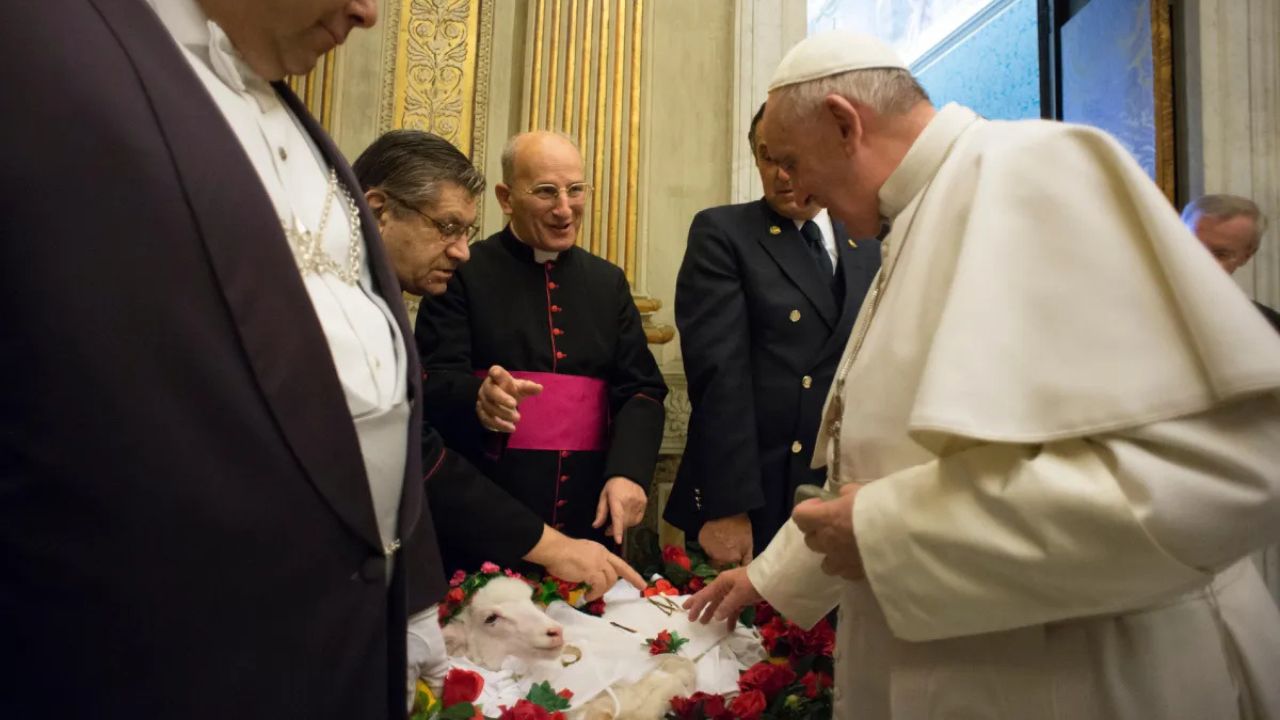🇮🇹 Versione italiana
Vatican City – On Sunday, June 29, 2025, on the Solemnity of Saints Peter and Paul, His Holiness Pope Leo XIV will preside over the Eucharistic Celebration in St. Peter’s Basilica at 9:30 a.m. During the Mass, he will personally bless and bestow the Pallia upon the new Metropolitan Archbishops, restoring a tradition that had been suspended in 2015.
A Return to the Fullness of the Sign
The pallium, a white woolen liturgical 'stole' adorned with six black crosses, represents the special bond between the Pope and the Metropolitan Archbishops, a link of communion with the Apostolic See. It is not a mere ornament, but a true symbol of episcopal collegiality in its deepest dimension, expressing unity in faith and in pastoral mission.
In 2015, Pope Francis had decided that the Pallia would be blessed on the solemnity of Saints Peter and Paul, but subsequently imposed in the respective dioceses by apostolic nuncios. While motivated by a desire to emphasize local Churches, this decision raised theological and practical concerns, as it deprived the gesture of its universal symbolic dimension, which finds its core precisely in the papal liturgy at the tomb of Peter. With the decision of Pope Leo XIV, the universal Church now witnesses the return of a liturgical form rich in meaning and historical continuity. The new metropolitans will thus receive the pallium from the hands of the Successor of Peter, in the very place that guards his tomb and bears witness to his faith.

An Ancient Vestment Laden with History
The pallium is one of the oldest liturgical vestments still in use. Its origins date back to Roman times, but it was adopted by the Church to signify the dignity and pastoral responsibility of certain bishops. The oldest depictions of the pallium are found in the famous mosaics of Ravenna, evidence of its diffusion even in the early centuries of Christianity.
More than its shape, however, its material is striking: the pallium is always made from lamb’s wool, a symbol of Christ the Good Shepherd. The wool comes from two lambs offered every year on the feast of Saint Agnes (January 21) and blessed by the Pope in an ancient ceremony held in the Chapel of Urban VIII in the Apostolic Palace.
These lambs are traditionally raised and cared for by the Trappist Monks of the Abbey of the Three Fountains in Rome, and the wool is then spun by the nuns of Saint Cecilia in Trastevere. A weave of prayer, labor, and offering unites monastic life with the Church’s pastoral mission.
A Ceremony of Strong Ecclesial Significance
From June 24, the Feast of Saint John the Baptist, the Pallia are kept in the Confessio of Saint Peter. There they remain before the Apostle until the solemnity, when the Pope imposes them on the new Metropolitan Archbishops — a sign of the mandate they have received and of their communion with the Bishop of Rome.
In an age where symbols often risk losing their meaning, Leo XIV performs a powerful act, one that speaks to the heart of the Church. By resuming the rite of the imposition of the pallium, he reaffirms the visible unity of the Church and the power of Tradition — not as mere repetition of the past, but as living fidelity to the essence of the Gospel.
The Profound Meaning of the Pallium
Worn over the chasuble, the pallium reminds the bishop of his mission as shepherd, teacher, and servant of the People of God. It is a sign of a responsibility that is not domination, but offering; not power, but service; not individualism, but communion. The Pope’s gesture of imposing it with his own hands is meant to be an encouragement and a blessing, so that each new metropolitan may live his ministry in the light of faith, in fidelity to the Gospel, and in full communion with the universal Church.
s.S.A.
Silere non possum